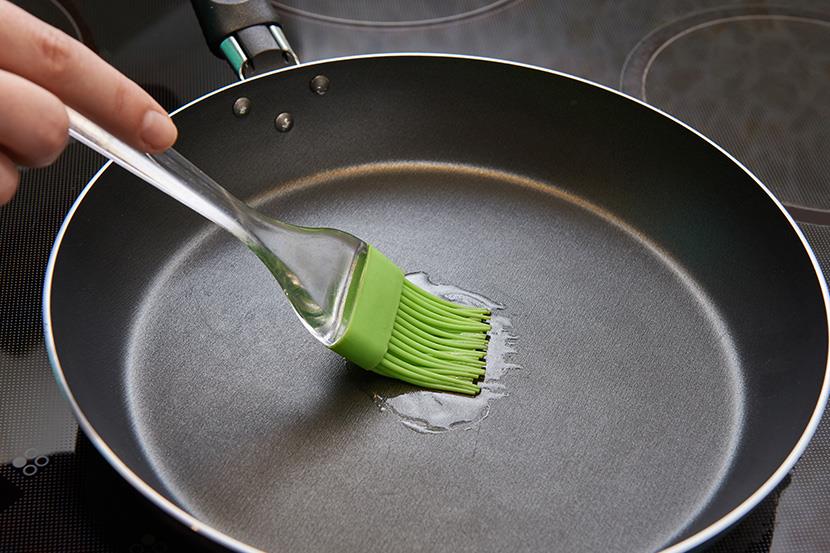Browning and the Lighter Side of Browning
Professional chefs agree: using nonstick pans to brown foods works fine, especially when making a quick pan sauce. You can use a nonstick pan to create more complex sauces too; but, the right combination of ingredients might need some experimentation.
What is browning?
Browning darkens the surface of raw meat, poultry, fish, and vegetables, adding a crusty texture—or caramelized texture if lightly browning—and a mellow, sweet flavor.
After you brown your food, you can deglaze by adding and mixing a liquid, such as wine, broth, or water, with seasonings, scraping and stirring together the main ingredient's caramelized bits.
Can you brown in nonstick pans?
Yes, definitely. In fact, your food can be enriched and the flavor heightened when using a nonstick pan because liquid and caramelized bits won't stick. Also, cleanup will be much easier.
Why is medium heat best for browning?
Lower heat cooks food more slowly, which is important for tenderizing and drawing out flavor. Slower cooking yields even heating. While the browning process may take longer, you’ll lessen the chance of accidentally burning your meal.
What is the "lighter side of browning"?
This more user-friendly method slowly cooks food in its natural juices over medium heat, allowing nutrients to meld into the food rather than stick to the pan. Lighter browning offers one of healthiest ways to cook without compromising flavor.
What liquids work best for deglazing?
Traditional liquids include red and white wines, sherry, brandy, stocks and broths, vegetable and clam juices, or water.
Even more natural deglazing methods draw from sugars found in apple, cranberry, or pomegranate juices, balsamic vinegar, honey, maple syrup, date sugar, blackstrap molasses, brown rice syrup, and evaporated cane juice.
-
Find Products
Teflon™ nonstick coatings make cooking easier and cleanup a breeze.
-
FAQs
See answers to many consumer questions.
-
Find New Recipes
Gail Greco, cookbook author and PBS-TV host, develops new recipes to try at home.
Caring for Your Teflon™ Nonstick Coatings
Keeping cookware featuring Teflon™ nonstick coatings clean and looking new is easy. Wash cooled pots and pans with hot, soapy water and a sponge or dishcloth. For pans with leftover oil or food residue, cleaning pads labeled safe for nonstick cookware/bakeware can be used with dish washing liquid. Visit the FAQ page for more information.









